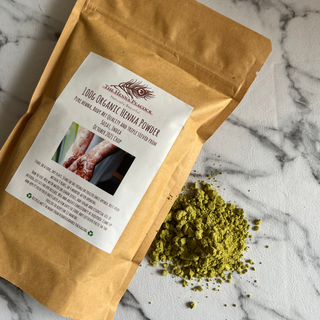I have a post already on mixing henna, but I wanted to add several options for you to try and experiment with. Different types and crops of henna work best with different ingredients- I recommend experimenting with different powders and recipies until you find the right one for you.
Below is a couple of examples of recipes and a list of ingredients that you can use. Feel free to pick and mix between the categories until you find something that works for you! the general formula for henna paste is something wet, Essential oil(s), and something sticky.

Basic Recipe:
henna powder and water
mix into a thick paste. Let it sit until dye release has happened, mix out any lumps. Thin out as required, and cone up or apply to hair.
Artist Favourite Recipe:
Henna Powder, Water, Lavender Essential oil, Sugar.
amounts vary depending on where you are, the temperature and humidity of where you live, and on the powder you have. I use this for my paste.
Liquids:
- Water or Floral Waters: great for children, people with sensitive skin, chemo patients and pregnant women. Usually ready within 4 hours.
- Lemon Juice: has the added bonus of being sour, which henna loves. Dye release takes longer to occur.
- Tea: sour/acidic, dye release quick- like with water. Caffeinated, so not suitable for people with high caffeine sensitivity. You can opt for caffeine free, which works the same.
- Apple juice: Bonus of being sticky, so you can skip that stage. Bees/wasps and insects can get attracted to this, so is generally best not when in the height of insect season. Sometimes paste may be a bit too sticky if you are in a humid area, and go sloppy/run after application. Best in hot but dry climates.
Something Sticky:
These help the paste stick to the skin once it has dried, which helps keep the paste on the skin for longer, enabling a deep, rich stain.
Examples include: Sugar, Honey, Golden Syrup, Maple syrup, Liquid Glucose, Mollasses.
Essential Oils:
Essential oils have monoterpenes in them (these may sound bad but are naturally occurring and part of the chemical structure of the plant essence), which can boost henna stains and help produce a killer stain!
Add up to 2 tablespoons (30ml) of essential oil to 100 grams of henna powder. I personally only use half the industry standard of essential oil per 100g of henna powder (one tablespoon/ 15ml), to make my paste more suited to sensitive skin. I find that this has no effect on stain or paste quality.
Disclaimer: I am not a health practitioner nor do I have any certifications to give any health or medical advice, I advise you do your research before using any oils.Some people can be allergic to or have reactions from different essential oils- I have come across quite a few people over the years with sensitivities to certain oils, and others can cause miscarriages and complications for pregnant women. So please, always check before application- especially if you are adorning someone else. You can do a small patch test by diluting 5 drops of essential oil in a tablespoon/15ml of carrier oil, and apply to the skin- best behind the ear or inner elbow. This works to check without putting it in your paste first.
Clove leaf
Cajeput
Teatree
Lavender: Generally the best for sensitive skin types and pregnant women. Gives a very different scent to the henna paste than clove and cajeput
Other oils:
There are plenty of other oils that are also good- it is best to research before using any to make sure they are suitable for the skin, learn of any contradictions, and ensure they contain monoterpenes.
You can also use essential oils to add scent, even if they contain little to no monoterpenes in them to do anything for the henna. They are nice, but are an extra cost as they can be quite costly. Popular options include rose, rose geranium, sweet orange, sandalwood, myrrh, etc. Always check their suitability before adding- some oils should NOT be applied to the skin, or can have effects on sensitive skin, or pregnant women. Always check the dilution rate for each oil too.









Commenti